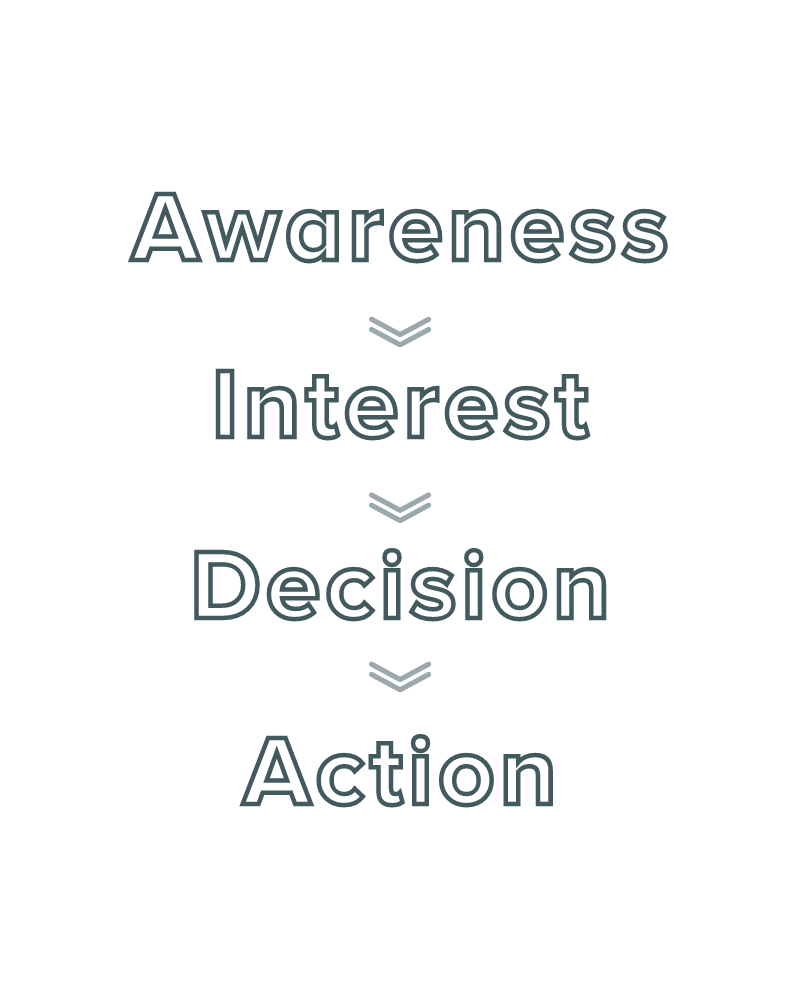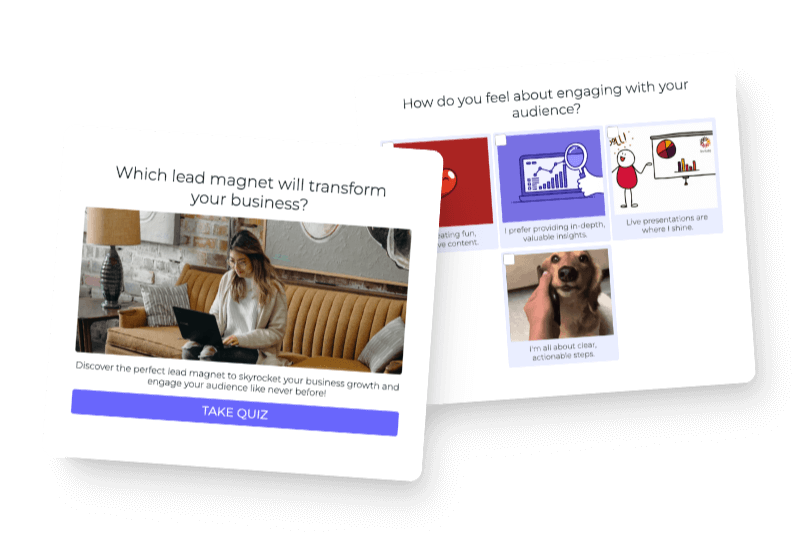Have you ever noticed how sales funnels can get really complicated, really quickly?
If you’re not careful, you may find yourself getting lost in the nitty-gritty details. We like to take a more straightforward approach to building funnels.
A sales funnel is simply a step-by-step guide that shows exactly how a visitor becomes a paid customer. Once someone is aware that your brand exists in the Awareness stage of your sales funnel, they’ll continue moving through the customer journey.
By looking at how a potential customer progresses through the sales process, you’ll determine areas that need improvement and identify obstacles that may keep them from making a purchase. This better understanding of your audience will help you increase conversions and sales.
All of this sounds amazing, right? So, now you may be wondering how it works in your particular industry. We’ll walk you through the process and help you build your first sales funnel.
Let’s start by understanding the four key stages of a typical sales funnel:

Awareness
Just like it sounds, the Awareness stage of your funnel is when someone becomes aware of your brand. It’s so important for you to capture your audience’s attention. Remember, the “know-like-trust” factor only kicks in when your audience knows who you are.
During the Awareness stage, a visitor may internally ask themselves questions like:
- What is the purpose of this brand? Why does it exist?
- What does the brand offer?
- Who does the brand help? Does it help people like me?
- Why are they passionate about helping us?
- Who are the people behind the brand?
Awareness is key because you can’t guide visitors through the rest of your sales funnel without them entering this stage. This usually happens when someone lands on your website, finds your social media profile, hears about your brand in an advertisement, or something similar.
Awareness is a great place to start, but it’s only the beginning. After this stage, if you’ve done a great job keeping their attention, the visitor may want to learn more about your products and services. This ushers them into the next stage.
Interest
This is where the magic happens! When someone moves from Awareness to Interest, they are consciously weighing their options. The Interest stage is often when a visitor will spend time researching your brand.
This research can look like reading reviews, learning from blog posts, asking their friends and family about their personal experiences with your brand, and reading through your website.
During this stage, they may ask themselves:
- What makes this brand unique?
- What sets them apart from their competitors?
- Can I trust their expertise and quality?
- How much experience do they have?
- What is the investment, and how does it compare to other options?
- Does the product fit my budget, timeline, etc.?
Your job in the Interest stage is to help your audience make informed decisions. Rather than pushing your product immediately, give them educational information to help them decide on their own. This will help them trust you and make a personal connection with your brand.
This is also the stage where your visitor becomes a lead. The next stage is when they’ll decide whether or not they will become a customer.
Decision
The Decision stage is your brand’s make-it-or-break-it moment. After someone has compiled all of their research, they’ll be looking to decide on whether or not they’re ready to buy your product.
This is where you can sweeten the deal. If the lead has joined your email list or has been browsing your website for a while, you could offer free shipping or a 10% off discount code. This may help them make the final decision. It also gives them a memorable “surprise and delight” experience.
Action
Once someone has made their decision, they’ll take action by making a purchase. However, if you sell services, this Action stage might look like scheduling a free discovery call or contacting you for a custom quote.
No matter what the action is, the last stage of the sales funnel is when the lead becomes a paying customer. This is a moment worth celebrating! After you thank them for choosing your brand, think about different ways to nurture your relationship with them.
A nurturing strategy could look like:
- Giving a free gift for being a first-time customer
- Extending an affordable upsell offer they’ll love
- Sending them a personal thank you note
- Giving them a list of educational resources that could benefit them
- Personally checking in with them after their purchase
- Asking for their feedback through a survey
Once someone becomes a paying customer, try to avoid developing a set-it-and-forget-it mentality. Current customers are five times easier to retain than new customers, so it’s better to spend your time making sure your customers are happy, even well after the Action stage.
The best way to bring people into your sales funnel
Now that you are sold on sales funnels, it’s time to focus on attracting potential customers. You can do this by offering initial value through freebies and lead magnets that will impress and delight your audience.
But how do you know which freebies to offer, and how these offers will work with your marketing strategy and sales funnel? Let’s start by understanding what your core marketing strengths are. Then, and only then, can you get closer to generating more leads and sales.
Take this short quiz to find out what your Magnetic Marketing archetype is and how to wield it to make stronger connections and conversions.
